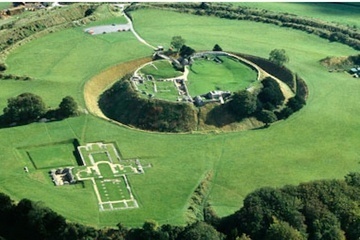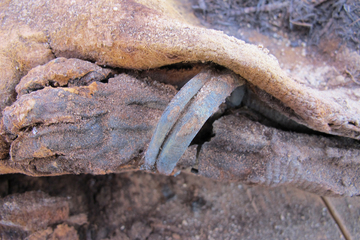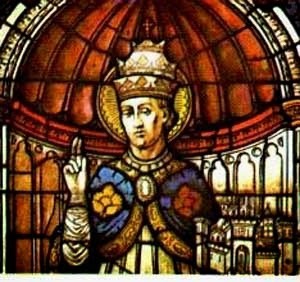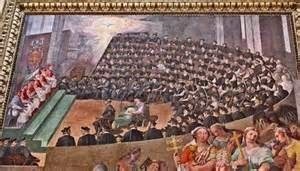MaryAnn Bernal's Blog, page 211
December 16, 2014
Just in time for Christmas - Scribbler Tales (volume one) print edition
 In Desperate Measures, Audrey learns of Paul’s duplicity when human cloning experiments go awry. Forbidden Lore beckons Arianna and Ethan into a haunted cemetery where they are confronted by a gathering of witches with evil intent . Adrian must challenge his father to marry Rina or suffer the fate of star-crossed lovers in Forever Lost. In The Hourglass, Flair makes a covenant with the Devil to keep Brice alive. Aaron reflects upon his childhood as a military brat in Sail with Me.
In Desperate Measures, Audrey learns of Paul’s duplicity when human cloning experiments go awry. Forbidden Lore beckons Arianna and Ethan into a haunted cemetery where they are confronted by a gathering of witches with evil intent . Adrian must challenge his father to marry Rina or suffer the fate of star-crossed lovers in Forever Lost. In The Hourglass, Flair makes a covenant with the Devil to keep Brice alive. Aaron reflects upon his childhood as a military brat in Sail with Me.
Paperback
Kindle
Audio

Published on December 16, 2014 15:05
Medieval City's Underground Ruins Discovered in England
By Kelly Dickerson
Live Science

Archaeologists have uncovered the layout of a medieval city near Salisbury, England.
Credit: English Heritage
Archaeologists have uncovered the network of a medieval city in England that dates back to the late 11th century.
The settlement, which includes a cathedral and a castle, is located at the historic site of Old Sarum, near Salisbury. In its heyday, the city thrived for about 300 years, but eventually declined in the 13th century, with the Roman conquest and the rise of New Sarum, the researchers said. Archaeologists have long known that the medieval city existed in Old Sarum, but this is the first detailed layout of the city ever created.
"Our survey shows where individual buildings are located and from this we can piece together a detailed picture of the urban plan within the city walls," Kristian Strutt, an archaeologist from the University of Southampton who is working on the site, said in a statement. [The 7 Most Mysterious Archaeological Finds on Earth]
[image error]
Strutt and the team discovered a series of huge structures that line the southern edge of the city's outer wall. The archaeologists think the structures are remnants of large defensive buildings that were designed to protect the city.
The team also found evidence of residential homes clustered in the southeastern and southwestern corners, between the outer and inner city walls. Old mineral deposits scattered throughout the site may be remnants of kilns or furnaces. Some evidence suggests the city may have been lived in again for a brief period after the 1300s.
The Old Sarum site belongs to English Heritage, an organization that advises the English government on historical sites. Because English Heritage wants to preserve the site, Strutt and the team of researchers didn't rely on traditional, Indiana Jones-style excavation tools. Instead, the researchers scanned the site using a series of noninvasive, high-tech survey techniques.
Archaeology tools have grown increasingly more sophisticated, and archaeologists are even using 3D-printed drones to explore sites now. For the Old Sarum survey, the team started by using magnetometry, a method that measures patterns in magnetic field strength. Magnetometry can create a map of features lying just below the Earth's surface, since every material has a unique magnetic property that leaves its own distinct signature on a magnet reader. The researchers also used ground-penetrating radar (GPR), which fires Earth-penetrating microwaves at the ground and measures signals that reflect off structures lying below the surface.
The team also used a method called electrical resistivity tomography (ERT). ERT is a noninvasive way to get a picture of structures that might be buried deeper than magnetometers or GPR can detect. The method involves strands of electrodes lowered into deep boreholes. The electrodes can pick up the electrical resistance of currents that pass through materials buried below the surface.
Live Science

Archaeologists have uncovered the layout of a medieval city near Salisbury, England.
Credit: English Heritage
Archaeologists have uncovered the network of a medieval city in England that dates back to the late 11th century.
The settlement, which includes a cathedral and a castle, is located at the historic site of Old Sarum, near Salisbury. In its heyday, the city thrived for about 300 years, but eventually declined in the 13th century, with the Roman conquest and the rise of New Sarum, the researchers said. Archaeologists have long known that the medieval city existed in Old Sarum, but this is the first detailed layout of the city ever created.
"Our survey shows where individual buildings are located and from this we can piece together a detailed picture of the urban plan within the city walls," Kristian Strutt, an archaeologist from the University of Southampton who is working on the site, said in a statement. [The 7 Most Mysterious Archaeological Finds on Earth]
[image error]
Strutt and the team discovered a series of huge structures that line the southern edge of the city's outer wall. The archaeologists think the structures are remnants of large defensive buildings that were designed to protect the city.
The team also found evidence of residential homes clustered in the southeastern and southwestern corners, between the outer and inner city walls. Old mineral deposits scattered throughout the site may be remnants of kilns or furnaces. Some evidence suggests the city may have been lived in again for a brief period after the 1300s.
The Old Sarum site belongs to English Heritage, an organization that advises the English government on historical sites. Because English Heritage wants to preserve the site, Strutt and the team of researchers didn't rely on traditional, Indiana Jones-style excavation tools. Instead, the researchers scanned the site using a series of noninvasive, high-tech survey techniques.
Archaeology tools have grown increasingly more sophisticated, and archaeologists are even using 3D-printed drones to explore sites now. For the Old Sarum survey, the team started by using magnetometry, a method that measures patterns in magnetic field strength. Magnetometry can create a map of features lying just below the Earth's surface, since every material has a unique magnetic property that leaves its own distinct signature on a magnet reader. The researchers also used ground-penetrating radar (GPR), which fires Earth-penetrating microwaves at the ground and measures signals that reflect off structures lying below the surface.
The team also used a method called electrical resistivity tomography (ERT). ERT is a noninvasive way to get a picture of structures that might be buried deeper than magnetometers or GPR can detect. The method involves strands of electrodes lowered into deep boreholes. The electrodes can pick up the electrical resistance of currents that pass through materials buried below the surface.

Published on December 16, 2014 08:10
Million-Mummy Cemetery Unearthed in Egypt
by Owen Jarus
Live Science

This image is of a child, around 18 months old, who was wrapped in a tunic and buried with a necklace and two bracelets on each arm. The jewelry makes the team think that the mummy is a girl but they cannot be sure.
Credit: Photo courtesy Professor Kerry Muhlestein
TORONTO — She's literally one in a million.
The remains of a child, laid to rest more than 1,500 years ago when the Roman Empire controlled Egypt, was found in an ancient cemetery that contains more than 1 million mummies, according to a team of archaeologists from Brigham Young University in Provo, Utah.
The cemetery is now called Fag el-Gamous, which means "Way of the Water Buffalo," a title that comes from the name of a nearby road. Archaeologists from Brigham Young University have been excavating Fag el-Gamous, along with a nearby pyramid, for about 30 years. Many of the mummies date to the time when the Roman or Byzantine Empire ruled Egypt, from the 1st century to the 7th century A.D. [See photos of the million-mummy cemetery]
"We are fairly certain we have over a million burials within this cemetery. It's large, and it's dense," Project Director Kerry Muhlestein, an associate professor in the Department of Ancient Scripture at Brigham Young University, said in a paper he presented at the Society for the Study of Egyptian Antiquities Scholars Colloquium, which was held last month in Toronto.
This cemetery was not a burial ground for kings or royalty. The people buried here were often laid to rest without grave goods, and without coffins for that matter, the researchers said. The deceased's internal organs were rarely removed; instead, it was the arid natural environment that mummified them. "I don't think you would term what happens to these burials as true mummification," Muhlestein said. "If we want to use the term loosely, then they were mummified."
Despite the low status of the dead, the researchers found some remarkably beautiful items, including linen, glass and even colorful booties designed for a child.
"A lot of their wealth, as little as they had, was poured into these burials," Muhlestein said.
The mummified child was buried with several other mummies. It was wrapped in a tunic and wore a necklace with two bracelets on each arm.
"There was some evidence that they tried much of the full mummification process. The toes and toenails and brain and tongue were amazingly preserved," the researchers wrote on the project's Facebook page. "The jewelry makes us think it was a girl, but we cannot tell."
Researchers estimate the infant was 18 months old when she died. "She was buried with great care, as someone who obviously loved her very much did all they could to take care of this little girl in burial," the researchers wrote. It's "very sad, but they succeeded. It was a beautiful burial."
Million mummy mystery
Where exactly these million mummies came from is an ongoing mystery, and one that the team has yet to solve. A nearby village seems too small to warrant such a large cemetery, the researchers said. There is an ancient town named Philadelphia (so named after King Ptolemy II Philadelphus) not far away, but that town has burial sites of its own. [8 Grisly Archaeological Discoveries]
While there is a small pyramid nearby, it was built more than 4,500 years ago, which is more than two millennia before the cemetery was first used.
"It's hard to know where all these people were coming from," Muhlestein told Live Science.
A mummy over 7 feet tall
The stories that these million mummies tell appear endless. The Brigham Young team has excavated more than 1,000 of the mummies over the past 30 years, and Muhlestein admits the team has a publishing backlog.
One discovery that hasn't been published is of a mummy who is more than 7 feet (2 meters) tall. "We once found a male who was over 7 feet tall who was far too tall to fit into the shaft, so they bent him in half and tossed him in," Muhlestein told the audience in Toronto.
That's an extraordinary height given the generally poor nutrition these people had, Muhlestein told Live Science in an interview, adding that "even with great nutrition, it's really unusual" for an individual to reach that height. The great height could be because of a medical condition that caused an excess of growth hormone, but more research needs to be done to determine this.
This surprisingly tall mummy was discovered before Muhlestein became director, and the findings have yet to be published, he said. "We have a large publishing backlog, [and] we're trying to catch up on making our colleagues and the public aware [of the finds]."
Blond and redheaded mummies
While excavating and publishing the discoveries from the cemetery pose daunting challenges, they also provide archaeologists with terrific opportunities.
For instance, the team is in the early stages of creating a database of all the mummies it has excavated. When complete, the database will help the researchers study burial patterns in the area.
While the database is in the early stages, it has already provided some intriguing initial results. Muhlestein said he and the other researchers can use the database to "show us all of the blond burials, and [it shows] they are clustered in one area, or all of the red-headed burials, and [it shows] they're clustered in another area."
These clusters are interesting because they suggest "perhaps we have family areas or genetic groups [in certain areas], but we're still trying to explore that," Muhlestein said.

Live Science

This image is of a child, around 18 months old, who was wrapped in a tunic and buried with a necklace and two bracelets on each arm. The jewelry makes the team think that the mummy is a girl but they cannot be sure.
Credit: Photo courtesy Professor Kerry Muhlestein
TORONTO — She's literally one in a million.
The remains of a child, laid to rest more than 1,500 years ago when the Roman Empire controlled Egypt, was found in an ancient cemetery that contains more than 1 million mummies, according to a team of archaeologists from Brigham Young University in Provo, Utah.
The cemetery is now called Fag el-Gamous, which means "Way of the Water Buffalo," a title that comes from the name of a nearby road. Archaeologists from Brigham Young University have been excavating Fag el-Gamous, along with a nearby pyramid, for about 30 years. Many of the mummies date to the time when the Roman or Byzantine Empire ruled Egypt, from the 1st century to the 7th century A.D. [See photos of the million-mummy cemetery]
"We are fairly certain we have over a million burials within this cemetery. It's large, and it's dense," Project Director Kerry Muhlestein, an associate professor in the Department of Ancient Scripture at Brigham Young University, said in a paper he presented at the Society for the Study of Egyptian Antiquities Scholars Colloquium, which was held last month in Toronto.
This cemetery was not a burial ground for kings or royalty. The people buried here were often laid to rest without grave goods, and without coffins for that matter, the researchers said. The deceased's internal organs were rarely removed; instead, it was the arid natural environment that mummified them. "I don't think you would term what happens to these burials as true mummification," Muhlestein said. "If we want to use the term loosely, then they were mummified."
Despite the low status of the dead, the researchers found some remarkably beautiful items, including linen, glass and even colorful booties designed for a child.
"A lot of their wealth, as little as they had, was poured into these burials," Muhlestein said.
The mummified child was buried with several other mummies. It was wrapped in a tunic and wore a necklace with two bracelets on each arm.
"There was some evidence that they tried much of the full mummification process. The toes and toenails and brain and tongue were amazingly preserved," the researchers wrote on the project's Facebook page. "The jewelry makes us think it was a girl, but we cannot tell."
Researchers estimate the infant was 18 months old when she died. "She was buried with great care, as someone who obviously loved her very much did all they could to take care of this little girl in burial," the researchers wrote. It's "very sad, but they succeeded. It was a beautiful burial."
Million mummy mystery
Where exactly these million mummies came from is an ongoing mystery, and one that the team has yet to solve. A nearby village seems too small to warrant such a large cemetery, the researchers said. There is an ancient town named Philadelphia (so named after King Ptolemy II Philadelphus) not far away, but that town has burial sites of its own. [8 Grisly Archaeological Discoveries]
While there is a small pyramid nearby, it was built more than 4,500 years ago, which is more than two millennia before the cemetery was first used.
"It's hard to know where all these people were coming from," Muhlestein told Live Science.
A mummy over 7 feet tall
The stories that these million mummies tell appear endless. The Brigham Young team has excavated more than 1,000 of the mummies over the past 30 years, and Muhlestein admits the team has a publishing backlog.
One discovery that hasn't been published is of a mummy who is more than 7 feet (2 meters) tall. "We once found a male who was over 7 feet tall who was far too tall to fit into the shaft, so they bent him in half and tossed him in," Muhlestein told the audience in Toronto.
That's an extraordinary height given the generally poor nutrition these people had, Muhlestein told Live Science in an interview, adding that "even with great nutrition, it's really unusual" for an individual to reach that height. The great height could be because of a medical condition that caused an excess of growth hormone, but more research needs to be done to determine this.
This surprisingly tall mummy was discovered before Muhlestein became director, and the findings have yet to be published, he said. "We have a large publishing backlog, [and] we're trying to catch up on making our colleagues and the public aware [of the finds]."
Blond and redheaded mummies
While excavating and publishing the discoveries from the cemetery pose daunting challenges, they also provide archaeologists with terrific opportunities.
For instance, the team is in the early stages of creating a database of all the mummies it has excavated. When complete, the database will help the researchers study burial patterns in the area.
While the database is in the early stages, it has already provided some intriguing initial results. Muhlestein said he and the other researchers can use the database to "show us all of the blond burials, and [it shows] they are clustered in one area, or all of the red-headed burials, and [it shows] they're clustered in another area."
These clusters are interesting because they suggest "perhaps we have family areas or genetic groups [in certain areas], but we're still trying to explore that," Muhlestein said.

Published on December 16, 2014 08:04
Statue that fell 3,000 years ago stands again

The statue was re-erected the king's funerary temple, which is already known for its Colossi of Memnon, two massive stone statues of Pharaoh Amenhotep III shown here. (AP Photo/Hassan Ammar)
By Kate Seamons
Fox News
In 1200BC, an earthquake took down a 43-foot statue of Amenhotep III, the grandfather of Tutankhamun. More than 3,200 years later, it's once again standing in Egypt, thanks to archaeologists who reassembled its 89 sizable pieces and many smaller fragments.
Its 121 tons now lord over those who pass the northern gate of his funerary temple in the city of Luxor. As AFP reports, the temple is already famously home to twin statues of the pharaoh, in this case seated, that are more than 70 feet tall.
Hourig Sourouzian, the archaeologist who heads the team working at the temple, calls the re-erected statue one of "the highest standing effigies of an Egyptian king in striding attitude"; a second such restored "striding" statue of Amenhotep III has been in place since March. This newly standing effigy—celebrated in a re-installment ceremony yesterday, per a press release—shows the king with a papyrus roll in each hand. It's not the only Amenhotep III-related news to grab recent headlines: Last month it was announced that a limestone head depicting the king was found at a temple 15 miles south of Luxor.
It's in poor condition and was surfaced accidentally during work that was being done on Armant Temple's foundation, reports Ahram Online. (More surprising discoveries: a jeweled mummy found under a collapsed roof.)
This article originally appeared on Newser: 3K Years Later, Pharaoh Statue Rises Again

Published on December 16, 2014 07:57
Easter Island mystery solved ... by tooth plaque
 Some of the massive Moai statues on Easter Island, Earth's most remote inhabited land, a South Pacific speck of volcanic rock so isolated the locals call it "The Navel of the World." (AP Photo/Explora en Rapa Nui)
Some of the massive Moai statues on Easter Island, Earth's most remote inhabited land, a South Pacific speck of volcanic rock so isolated the locals call it "The Navel of the World." (AP Photo/Explora en Rapa Nui)By Elizabeth Armstrong Moore
Fox News
Scientists have been pondering why people who lived on Easter Island (or Rapa Nui) appear to have eaten palm trees—a primary crop, reports Nature World News—for several centuries when other research suggests the plant went extinct right around the time of colonization in the 13th century.
The answer may have just been found in tooth plaque. It turns out that the 30 teeth scientists analyzed, which were taken from excavations at several coastal sites in the early 1980s, had plaque with starch grains that line up well with the modern sweet potato, reports Phys.org. By studying actual modern sweet potatoes grown in soil similar to Rapa Nui's, they also found that the tuber skins took on palm phytoliths from the soil, explaining why original analyses suggested palm was part of the diet.
This marks the first time biological anthropologists have studied dental calculus in the Pacific, and they say it makes a case for taking into consideration the environments the plants were grown in and not just the plants themselves.
(Meanwhile, genetic data suggests Easter Islanders were not as isolated as once thought.)
This article originally appeared on Newser: Teeth Solve an Easter Island Mystery

Published on December 16, 2014 07:50
History Trivia - Oliver Cromwell becomes lord protector of England, Scotland and Ireland.
December 16

882 Marinus I was elected Roman Catholic pope, replacing the murdered John VIII.

955 Ottaviano (age 18), the only son of Duke Alberic II of Spoleto, who ruled Rome, became Pope John XII when his father ordered his election. John's pontificate lasted nine years. 1

431 Henry VI of England was crowned King of France at Notre Dame in Paris. Though young Henry had been proclaimed king at age ten months, it was not until he was ten years old that he was officially crowned at Notre Dame Cathedral.

1485 Catherine of Aragon, Spanish princess and first wife of Henry VIII was born.

1631 Mount Vesuvius, Italy erupted, destroying 6 villages & killing 4,000.

1653 Parliamentarian general Oliver Cromwell became lord protector of England, Scotland and Ireland.


882 Marinus I was elected Roman Catholic pope, replacing the murdered John VIII.

955 Ottaviano (age 18), the only son of Duke Alberic II of Spoleto, who ruled Rome, became Pope John XII when his father ordered his election. John's pontificate lasted nine years. 1

431 Henry VI of England was crowned King of France at Notre Dame in Paris. Though young Henry had been proclaimed king at age ten months, it was not until he was ten years old that he was officially crowned at Notre Dame Cathedral.

1485 Catherine of Aragon, Spanish princess and first wife of Henry VIII was born.

1631 Mount Vesuvius, Italy erupted, destroying 6 villages & killing 4,000.

1653 Parliamentarian general Oliver Cromwell became lord protector of England, Scotland and Ireland.

Published on December 16, 2014 03:00
December 15, 2014
History Trivia - Sergius I elected Pope
December 15

37 AD, Nero was born. He was the Roman emperor who is alleged to have fiddled while Rome burned.

687 Sergius I (Saint Sergius) was elected Roman Catholic pope. He received Caedwalla, King of the West Saxons, and baptized him (689) but because the King died in Rome, he was buried in St. Peter's. Sergius also ordered St. Wilfrid to be restored to his see (Bishopric at York), greatly favored St. Aldhelm, Abbot of Malmesbury, and is credited with endeavoring to secure the Venerable Bede as his adviser. Finally he consecrated the Englishman St. Willibrord bishop, and sent him to preach Christianity to the Frisians.


37 AD, Nero was born. He was the Roman emperor who is alleged to have fiddled while Rome burned.

687 Sergius I (Saint Sergius) was elected Roman Catholic pope. He received Caedwalla, King of the West Saxons, and baptized him (689) but because the King died in Rome, he was buried in St. Peter's. Sergius also ordered St. Wilfrid to be restored to his see (Bishopric at York), greatly favored St. Aldhelm, Abbot of Malmesbury, and is credited with endeavoring to secure the Venerable Bede as his adviser. Finally he consecrated the Englishman St. Willibrord bishop, and sent him to preach Christianity to the Frisians.

Published on December 15, 2014 03:00
December 14, 2014
Mr. Chuckles bumps into Nelson Suit while stirring the Wizard’s Cauldron
 The Wizard speaks:
The Wizard speaks:Kidlit is as popular as it ever has been and this week, Nelson Suit, who is a big supporter and friend of the Cauldron joins me to discuss the state of Kidlit and also so his many readers learn a bit more about the man behind the 'spokes! A kidlit writer himself, I contacted him on the Wizphone as he scribbled away on his latest work - here's what he had to say.
Tell us a bit about you and Inkspokes, Nelson.
Thank you Mark for having Inkspokes and me at the Cauldron. I’ve been a great admirer of your work here and so you can guess at my excitement for being invited in! Inkspokes is a website that showcases brilliant book illustrators, indie authors and creative folks in indie publishing.
Read More

Published on December 14, 2014 15:52
History Trivia - Princess Mary Stuart becomes Queen Mary I of Scotland
December 14

867 AD Adrian II was elected Roman Catholic pope. Adrian had difficulties with international politics. The eighth ecumenical council and the fourth Council of Constantinople took place during his reign. He died on this date in 872.

872 AD John VIII was elected Roman Catholic pope on the very day Pope Adrian II died. His pontificate was marked with political intrigue, and he is believed to have been murdered by conspirators involved in a plot of local politics.

1503Nostradamus was born. Author of a collection of predictions in quatrains published in the book Centuries, Nostradamus gained fame in his lifetime when some of his prophecies appeared to come true.

1542 Princess Mary Stuart became Queen Mary I of Scotland.


867 AD Adrian II was elected Roman Catholic pope. Adrian had difficulties with international politics. The eighth ecumenical council and the fourth Council of Constantinople took place during his reign. He died on this date in 872.

872 AD John VIII was elected Roman Catholic pope on the very day Pope Adrian II died. His pontificate was marked with political intrigue, and he is believed to have been murdered by conspirators involved in a plot of local politics.

1503Nostradamus was born. Author of a collection of predictions in quatrains published in the book Centuries, Nostradamus gained fame in his lifetime when some of his prophecies appeared to come true.

1542 Princess Mary Stuart became Queen Mary I of Scotland.

Published on December 14, 2014 03:00
December 13, 2014
History Trivia - Saint Celestine V resigns the papacy after only five months
December 13

863 Boudouin with the Iron Arm, earl of Flanders, wed Charles II the Bald of France's daughter Judith. He was daring warrior who fell in love with the youthful widow of two English kings, married her and fled with his bride to Lorraine. Charles, though at first angry, was at last conciliated, and made his son-in-law margrave of Flanders, which he held as a hereditary fief. The Norsemen were continually devastating the coastlands at this time, and Baldwin was entrusted with this outlying borderland in order to defend it. He was the first of a line of strong rulers of Flanders, who early in the 10th century exchanged the title of margrave for that of count.

1294 Saint Celestine V resigned the papacy after only five months; Celestine, who founded the Celestine order, was the first pope to abdicate. He had accepted the position only because the papacy had been vacant for years and needed a leader. In his eighties when elected, the work proved too problematic, and he resigned.

1545 Council of Trent began. The council would pass legislation dealing with the doctrinal challenges of the Protestant Reformation.


863 Boudouin with the Iron Arm, earl of Flanders, wed Charles II the Bald of France's daughter Judith. He was daring warrior who fell in love with the youthful widow of two English kings, married her and fled with his bride to Lorraine. Charles, though at first angry, was at last conciliated, and made his son-in-law margrave of Flanders, which he held as a hereditary fief. The Norsemen were continually devastating the coastlands at this time, and Baldwin was entrusted with this outlying borderland in order to defend it. He was the first of a line of strong rulers of Flanders, who early in the 10th century exchanged the title of margrave for that of count.

1294 Saint Celestine V resigned the papacy after only five months; Celestine, who founded the Celestine order, was the first pope to abdicate. He had accepted the position only because the papacy had been vacant for years and needed a leader. In his eighties when elected, the work proved too problematic, and he resigned.

1545 Council of Trent began. The council would pass legislation dealing with the doctrinal challenges of the Protestant Reformation.

Published on December 13, 2014 03:30



